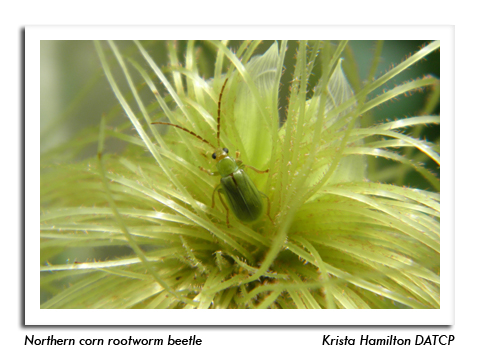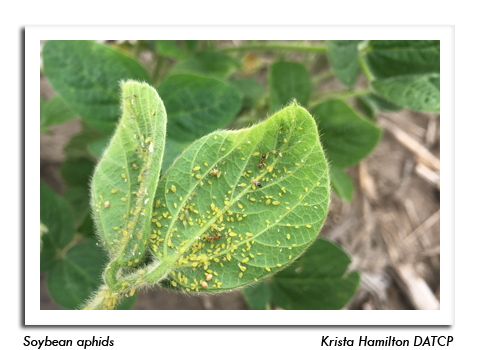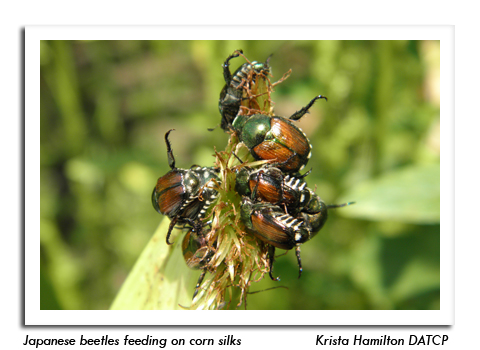
 |
|
|
Looking Ahead
Volume 63 Number 11 Date 07/12/2018 SPOTTED WING DROSOPHILA - Reports indicate fly emergence is accelerating. The appearance of SWD adults signals that eggs are being laid and the small white larvae should be detectable in fruits. Berry growers are advised to begin sampling for larvae to help determine fruit marketability and whether management actions are working. Larval sampling methods are provided in the FRUIT section. CORN ROOTWORM - Beetles are emerging in southern Wisconsin. Both the northern and western species have been observed in Dane, La Crosse and Rock counties as of July 12. EUROPEAN CORN BORER - Summer moths are appearing in the Columbia, Dodge, Fond du Lac and Monroe County black light traps. The predominant stages noted in fields this week were fifth-instar larvae and pupae. Egg laying is beginning near Beloit, La Crosse, Spring Green and other advanced locations. The treatment window for second-generation larvae will open during the week of July 15 with the accumulation of 1,550 degree days (modified base 50°F). SOYBEAN APHID - Aphid pressure is gradually building in R1-R2 soybean fields, although the typical average is still very low at fewer than five aphids per plant. Monitoring efforts should be increased as soybeans advance through the early to intermediate reproductive growth stages. APPLE MAGGOT - Counts of 1-12 flies per trap were reported in the past week from 11 of 27 apple orchard locations. Fly emergence is expected to escalate throughout July and peak in August. Apple growers concerned about this pest can set a minimum of three traps per 10 acres at this time, increasing the density to one trap every 200-300 feet along the orchard perimeter as the season progresses. The traps should be hung at eye-level near wild hosts and early-ripening cultivars. JAPANESE BEETLE - Numbers are increasing in fruit and field crops over much of the state. This beetle could become a serious problem again this season since soil moisture levels, particularly in southern Wisconsin, have generally been favorable for larval survival. Damage to fruit trees, ornamentals and field crops will continue to intensify this month. Spot treatment of individual trees or problem areas may be necessary. -- Krista Hamilton, DATCP Entomologist 




|
|
|